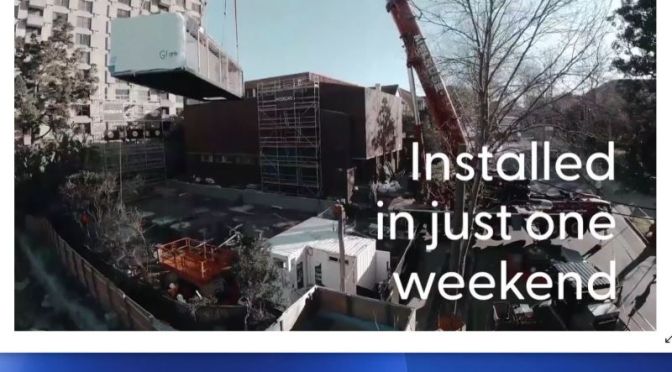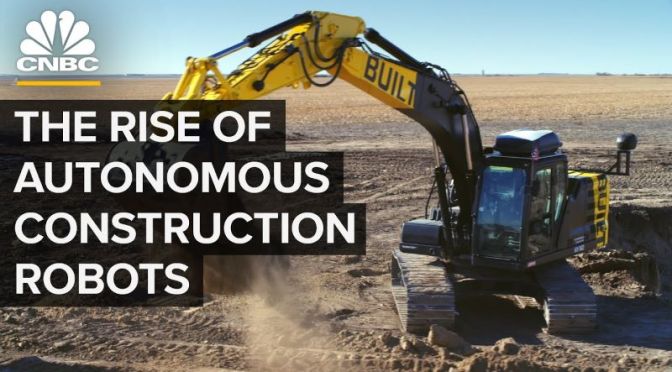If we made 90% of our new buildings from wood, we could reduce our global CO2 emissions and improve our wellbeing, Tom Heap explains.
Tag Archives: Construction
Urban Views: Living In China’s Megacities (Video)
More than 60 percent of China’s population of 1.4 billion currently lives in cities. Within a decade, the share of urban dwellers is expected to increase to 75 percent. Construction is booming and competition for residential land is fierce.
But the right to live in a city in China is conditional. Authorities want their modern cities to be peopled with well-educated, highly-qualified or politically well-connected residents. As a result, certain standards have to be met to be eligible for a modern, urban home. Only members of China’s political classes and the financially successful have a hope of qualifying. Yet more than half of the people who live in cities are so-called “migrant workers.” They come from rural communities and have no official rights to settle in cities. They are there to work. With no proper rights, they are merely tolerated while they serve as merchants, servants, waitstaff, cleaners, construction workers and tradespeople.
But while they are indispensible to daily life in the cities, they are unable to afford their exorbitant rents. This documentary looks at how and where these workers live, and asks whether middle and working class Chinese even figure in the official vision of shiny, high-tech cities. The filmmakers also look at what happens to those who oppose official plans, or stand in the way of the building boom.
Analysis: Why The World Is Running Out Of Sand
Even though sand can be found in nearly every single country on Earth, the world could soon face a shortage of this crucial, under-appreciated commodity. Sand use around the world has tripled in the last twenty years, according to the UNEP. That’s far greater than the rate at which sand is being replenished. Here’s what’s behind the looming sand crisis.
Views: How Singapore’s ‘Gardens By The Bay’ Was Constructed (Video)
The ‘Gardens by the Bay’ are home to 100,000 thriving plants–but for the entire setup to work, the designers had to figure out a way to protect the eerily-designed structures against the strong winds that hit Singapore.
The Gardens by the Bay is a nature park spanning 101 hectares in the Central Region of Singapore, adjacent to the Marina Reservoir. The park consists of three waterfront gardens: Bay South Garden, Bay East Garden and Bay Central Garden.
Timelaspe Views: 4-Story Prefab Modular School Building Constructed In Sydney, Australia (Video)
This four-storey school was built in the Modscape factory in just 12 weeks before taking the drive up to North Sydney to be installed in just one weekend.
Comprised of 20 modules, the building includes 14 learning spaces, three COLAs, staff amenities, a lift and stairs. In collaboration with Team 2 Architects.
Future Of HomeBuilding: ‘3D-Printed HOmes’ Fully Certified In Germany
The impact of this 3D-printing breakthrough for construction and for the buildings we all use could be huge.
See more of PERI’s 3D-printing process – http://bit.ly/3gRCsus
Full story here – https://www.theb1m.com/video/why-this…
Building Industry: ‘The Rise Of Autonomous Construction Robots’
There’s a lot of buzz around self-driving cars, but autonomous-driving technology could revolutionize a different industry first — construction. That industry hasn’t changed much over the last several decades, according to some experts, making it an ideal candidate for automation.
“The way we build today is largely unchanged from the way we used to build 50 years ago,” said Gaurav Kikani, vice president of Built Robotics. “Within two years, I think we’re really going to turn the corner, and you’re going to see an explosion of robotics being used on construction sites.”
The industry is also faced with a labor shortage that the Covid-19 pandemic has further complicated. “Covid is making people step back and say, ‘hey, the way we’ve been doing things for a long time is just not sustainable,’” said Kevin Albert, founder and CEO of Canvas. “It is just a wake-up call for the industry.”
Canvas is one of several companies working on autonomous construction technology. Big players like Caterpillar and Komatsu, and start-ups like SafeAI and Built Robotics, see value in using autonomous machines to accelerate construction projects. The mining industry was one of the first to employ the use of self-driving tech.
Caterpillar began its first autonomy program more than 30 years ago. The company now has the largest fleet of autonomous haul trucks. Caterpillar says it’s hauled 2 billion metric tons in just over six years. Built Robotics is a San Francisco-based start-up founded by an ex-Google engineer that already has machinery out in the field. It’s automated several pieces of equipment, such as bulldozers and excavators.
“You can now collapse your construction timeline so you can knock out work overnight so that it’s ready for your human workers in the morning to speed them along,” Kikani said. SafeAI is another Silicon Valley start-up. It recently teamed up with Obayashi for a pilot program. It’s been retrofitting equipment like dump trucks, bulldozers and loaders. Robots are also helping inside.
San Francisco-based Canvas created an autonomous machine for finishing drywall and has worked on projects like the San Francisco International Airport and Chase Arena. Humans work alongside its robotic system. “Drywall is very hard work on the body,” Albert said. “And we’ve seen that 1 out of every 4 workers has to end their career early because of injuries. This will create longer careers for people and also enable people to join the trades that haven’t had access before.”
The construction industry is one of the largest sectors in the global economy, with about $10 trillion spent each year. That spending accounts for 13% of the world’s GDP, even though the sector’s annual productivity growth has only increased 1% over the past 20 years. According to McKinsey & Co., $1.6 trillion of additional value could be created through higher productivity, and autonomy would help the industry achieve that.
Future Of Cities: ‘Building & Construction In 2030’
Automation is widespread, sustainability is critical, carbon emissions are heavily restricted and our buildings are made in factories. Welcome to the construction industry of 2030.
Housing: Flood Insurance Is Spurring Buyers To Live In Dangerous Areas (CNBC)
2020 is officially the busiest hurricane season on record and flooding is one of a storm’s most devastating consequences. FEMA estimates one inch of flood water can cause up to $25,000 in damage. The U.S. began offering nationalize flood insurance in 1968 but the program, called the NFIP, is now over $20 billion in debt. Private companies are starting to offer flood insurance as well. However, flood insurance is more complicated than it may appear. Watch the video to better understand how flood insurance works, and doesn’t work, in the U.S.
Landmark Profiles: ‘The Woman Who Built The Brooklyn Bridge’ (Video)
New York’s Brooklyn Bridge only exists today because of the determination and resolve of one woman. This video was powered by Bluebeam.










